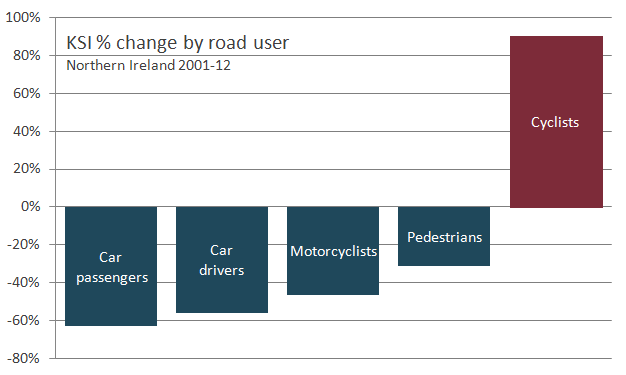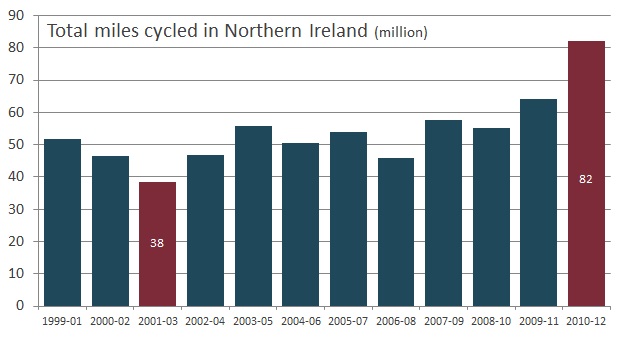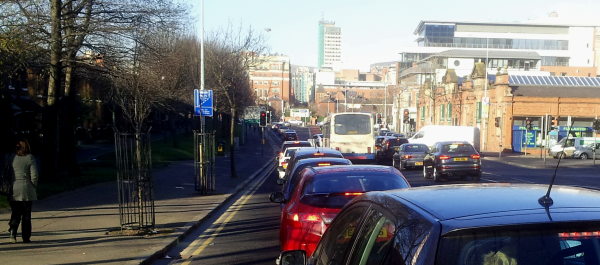

Official statistics in Northern Ireland appear to show a worrying trend in road danger. Headline figures show overall rates of people killed, seriously or slightly injured on Northern Ireland’s roads continue to drop. But one group of road users is facing rising casualty rates – cyclists.
Any death on our roads is one too many, and behind the headline grabbing figures, many more people suffer minor or serious injuries each year travelling in Northern Ireland. Government bodies such as Department for Regional Development (DRD), Roads Service, the Department of the Environment (DOE) and the Police Service of Northern Ireland (PSNI) work hard to create safer road conditions and awareness of road user behaviour which causes accidents.
Recently released figures from PSNI showed that in 2011 there was a slight reduction in road casualties, a 2% annual drop to 8,760. There were 59 fatalities in 2011, a slight rise from 55 in 2010 which was the fewest number since records began in 1931. Wesley Johnston analyses why, despite great reductions over the last few decades, people are still dying on our roads.
What grabbed the attention was a sharp increase in cyclists casualties, an annual rise of 19% to 255 in 2011. The only other group to show a significant annual increase was pedestrians, up 13% to 834.
Looking at two years in isolation doesn’t give an accurate reflection of road safety, so to find some more general trends, I took the Police Recorded Injury Road Traffic Collisions and Casualties figures for ten years from 2002 to 2011 for pedestrians, drivers, passengers, cyclists and motorcyclists. To give some context to the figures – factoring in changing travel patterns – I added data from the DRD Northern Ireland Travel Survey for the same modes, showing miles and journeys per person per year from 1999-2002 to 2008-2011. The travel survey is based on a rolling 3 year average – I matched the latest year to the same year for the PSNI figures eg 2011 road casualties against 2009-2011 travel levels and so on.
The figures appear to show a worrying trend in Northern Ireland – while overall safety continues to improve, the situation for cyclists seems to be deteriorating.
Cyclists
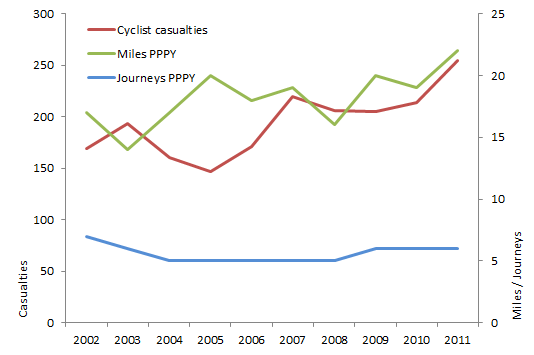
Cyclists in Northern Ireland appear to be the only group with a strong upward trend in casualties over the last ten years. This is coupled with a rise in the average miles cycled per person per year, yet it is difficult to draw a conclusion that the two are directly linked, especially when the opposite appears true for drivers.
Pedestrians
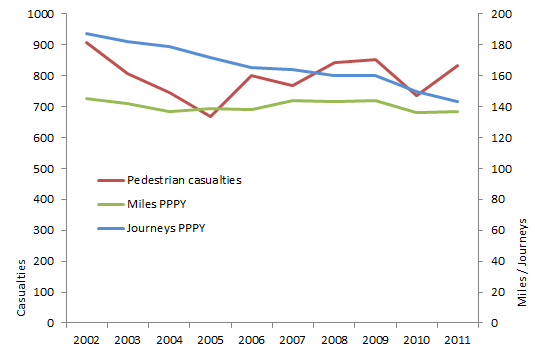
Pedestrian casualties have fluctuated over the last decade, with an upward trend from 2005, but overall the figures remain generally constant. What is perhaps more concerning is the steady decrease in the number of walking journeys people are taking.
Motorcyclists
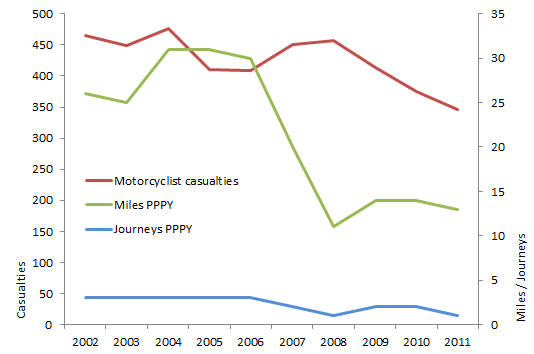
The figures for motorcyclists throw up some interesting points. From 2006 there has been a marked decrease in miles per person per year, coupled with a reduction in number of journeys. Someone with more insight into motorcycling may have an explanation for this, but it may be that the downward trend in casualty rates is more to do with less motorcyclists on the road than anything else.
Drivers
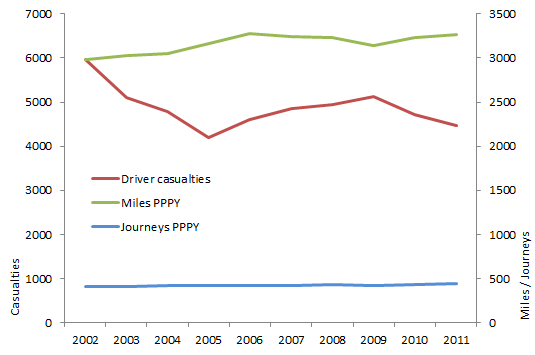
The bigger success stories in road safety are accounted for by drivers and passengers. We see that driver casualties remain in a downward trend over the decade, despite miles travelled per person per year increasing over the same period. Naturally much of the focus of DOE Road Safety campaigns has been on drivers, and the causes of accidents, and it appears some progress is being made.
Passengers
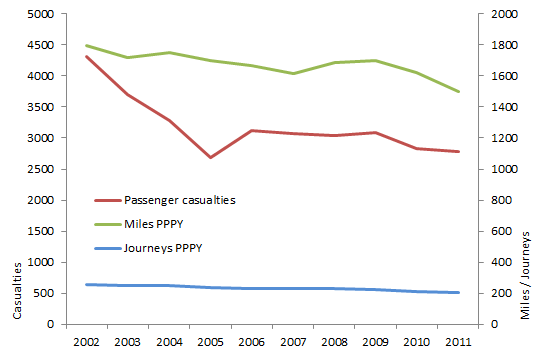
Passenger casualties, like that of drivers, continues a downward trend over the decade. But both indicators for travel show a decrease as well – what is most interesting here is the suggestion that there may be a shift away from shared travel to individual travel, but this is only speculation at this level of detail.
Why is cycling bucking Northern Ireland road safety trends?
This is the worrying question which needs better analysis than I can provide. The two strongest upward trends for miles and journeys are for drivers and cyclists, yet the casualty figures are sharply divergent for these two groups. If it is true that cycling is becoming a more popular form of travel in Northern Ireland, then this may explain some of the rise – more cyclists = more accidents.
There is also the question of whether government is investing enough to match rising cycling rates. In 2010-11, Roads Service expenditure on cycling measures as a proportion of the total roads budget was just 0.16%, against a general modal share of about 1% (NI) or 3% (Belfast). If the figures and commentary presented above pass scrutiny, it raises difficult questions on Northern Ireland’s commitment to cycling as a form of transport, and the understanding of the dangers faced by cyclists on our roads.
The forthcoming Active Travel Strategy for Northern Ireland contains an ‘aspiration’ to increase cycling levels to 1.5% by 2020 (I know), but to achieve this may require a large urban centre such as Belfast to double its cycling levels. It is not unrealistic to suggest that Belfast may come close to a 10% modal share by 2020, but do our road planners and politicians have any idea what a 10% share would look like on our streets, especially if the current poor infrastructure provision is not addressed?
Arguments about road space reallocation are fraught with controversy, as we have seen with Belfast On The Move, and it may be unrealistic to call for sweeping changes at present, given the tiny proportion of modal share. But if cycling rates continue to rise in line with expectations, aspirations and the upturn we see every day, and government has no plan or inclination to invest in cycling-focused infrastructural safety improvements, cycling casualties may continue to rise.
